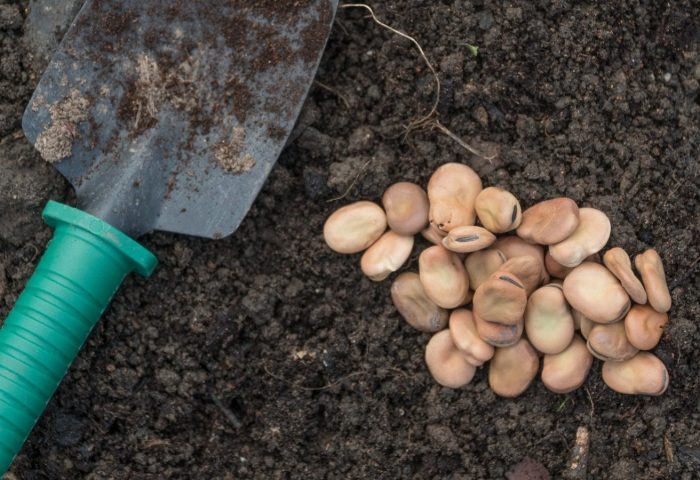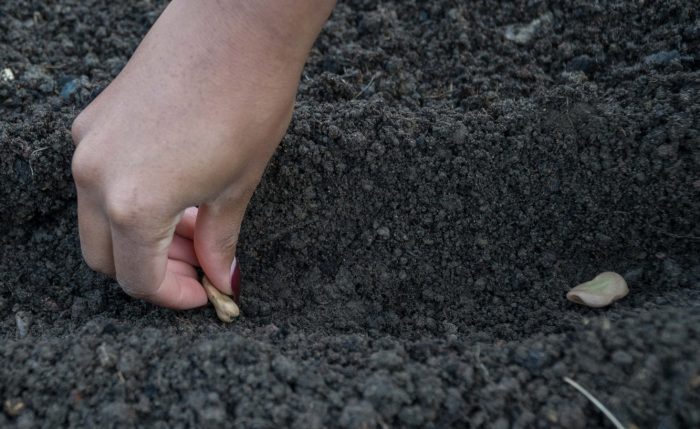Anyone with experience growing broad beans will tell you, you get a greater crop than is reasonably affordable to buy at most supermarkets. Homegrown broad beans are great. Not only in taste, but also in their flexibility to be sown at different times…
When & Where to Sow Broad Beans
In October and November, broad beans can be sown outdoors and undercover. In January and February, they can be sown indoors and undercover. And finally, from February to April, they can be sown directly outdoors. Although, these delicious beans will only harvest between late spring and summer. Generally, between May and August.
Despite their sowing flexibility, broad beans are most popularly sown between March and April. They’re best grown in fertile soil. Which ideally, has been dug out and turned over with well-rotted nutrient-rich compost. Which also calls for very good drainage.

How to Sow & Plant Broad Beans
Directly Outdoors
Draw out seed drills about 2 inches / 5cm deep, directly onto your growing site. Spacing the seeds about 24 inches / 60cm apart and planting scar side down.
Transplanting
If you’ve already sown broad beans indoors or undercover, transplant your young plants into deep drills of the same depth. Spacing each plant/seedling about 9 inches / 23cm apart.

Tips for Growing Broad Beans
Once flowering, broad beans will need to be regularly watered to promote development into healthy crops. Although once the plants are well established with leaves, be cautious not to get their foliage wet. This can make them sensitive to plant diseases such as chocolate spot, broad bean rust or blight.
When first broad bean pods begin to appear, gently pinch out the first shoot. This will hopefully give you a heavier harvest.
Tall varieties of broad bean plants will become heavier as they grow. Give them support against strong winds. Use gardening accessories such as stakes, string and bean nettings.
Dwarf varieties require very little support if any. They’re more ideal for small growing spaces or spaces susceptible to high winds.

Harvesting Broad Beans
As well as their sowing times, broad beans are also flexible in when they can be harvested. Having sown broad beans of different varieties or successively, you can expect to harvest broad beans throughout spring and summer. However, March sowings are harvested in July.
Once ready, you can harvest broad beans according to how you prefer them. Broad beans can be harvested young. At this stage, broad beans would typically resemble the size of peas and their pods are between 2 to 3 inches long. Young broad beans pickings provide a sweeter taste and tender texture. This is the best time to eat them whole and shelled, either cooked or raw.
Broad beans can also be eaten when they’re medium in size, with pods about 4 to 6 inches in length. Sometimes broad beans become larger and visible through their pod. In this case, harvest them and remove their pod. Cooking the beans alone rather than the whole (in the pod). Alternatively, broad beans can be consumed as a dry bean.
Broad beans which are wrinkled or darkened at the ends/edges should not be harvested.

 Call us on 01246 240880
Call us on 01246 240880 Free 48hr Delivery
Free 48hr Delivery Sign-up and receive 10% off
Sign-up and receive 10% off